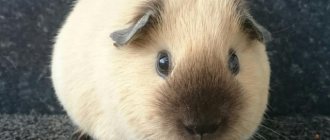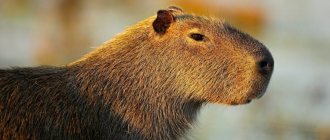Wolves are beautiful and formidable predators that have lived on Earth for about two million years. This is one of the largest modern animals in the canine family. Wolves are considered the direct ancestors of the domestic dog. Today there are approximately 32 subspecies of wolves, differing in fur color and size.
Photo: Pixabay.com
The world's largest officially documented wolf was captured in 1939 in Alaska by renowned hunter Frank Glaser. The animal weighed 175 pounds, or 79.4 kg. Anecdotal reports report a wolf weighing 230 pounds in Alberta, Canada.
Wolves live all over the world, their habitat is one of the largest among land mammals. It covers significant areas of Eurasia, North America and Africa. Animals can exist in a variety of landscapes: forests, mountains, steppes, semi-deserts, tundra.
The size, weight, and coat color of wolves depend on the specific place of their life and environmental conditions. The colder the climate, the larger the animal. The color also corresponds to the habitat. Gray-brown wolves live in forests, gray and red ones live in deserts, and light, almost white ones live in the tundra. There are solid colors, pure red, white, almost black.
Among the features of the lifestyle of wolves, one can note their ability to travel long distances in search of food. They easily, at a trot, cover distances of several kilometers. When chased, they can reach a speed of 65 km/h. The animals have an excellent sense of smell; they can smell prey 3 km away. There are about 200 million shades of smell.
Wolves are considered monogamous, live in families, pairs are formed for a long time, until one of the partners dies. Families form flocks, sometimes up to 40 individuals, led by a pair of leaders.
A lot of useful and interesting information about wolves was collected by the team of authors of the information portal Petkeen.com. These are people professionally involved in studying the life of wild animals, and simply lovers of our little brothers.
We present to you the rating of the 7 largest wolves in the world, which was prepared according to the portal Petkeen.com.
Rating:
- Mackensian plains wolf
- Eurasian wolf
- Tundra wolf
- Canadian wolf
- Great Plains Wolf
- polar Wolf
- dire wolf
Steppenwolf
Much less forest-like, the coat is sparse and hard, the color along the back is rusty, more like chestnut, and the sides are pale gray. The habitat is the Russian south, which includes the steppes of the Ciscaucasia, Caspian region, Urals, and sometimes the Lower Volga region.
The species was subject to little study; they were unable to develop a concept of designated differences. In terms of species size and population, it is not very numerous, the reason is the constant regulation of the number of individuals by people.
Iberian wolf
The appearance of the predator resembles an ordinary gray wolf. The only difference between them is their size. The weight of the Iberian wolf is much less. On the tail, muzzle and front legs there are dark markings characteristic of this species of animal.
Females are about 10 kg lighter than males, the male weighs up to 40 kg.
They hunt in small packs. Animals use rabbits, deer, goats and roe deer as food. Cases of attacks on livestock cannot be ruled out; sheep were the main victims. Iberian wolves help maintain balance in the growing wild boar population. They exterminate wood grouse, and attacking predators helps the animals survive.
Until 1900, the gray wolf subspecies lived on the Iberian Peninsula. The authorities decided to rid the lands of them. Almost all the animals were killed, leaving only a few representatives in the northwestern part. Similar measures were taken by Portugal. The Iberian wolf continued to exist thanks to the efforts of environmentalists who opposed getting rid of predators.
Siberian tundra wolf
It is considered one of the large subspecies of the wolf genus. In adult individuals, the weight reaches 50 kg, the body is up to 140 cm long, females are slightly smaller. The color can change depending on the seasons and age of the individual; in winter it is often white, with black specks on the face or back.
It lives in the tundra region of Russia, among the Kola Peninsula and Kamchatka, and is found in taiga places, near the shore of the North Sea, and sometimes in Scandinavia. It does not live in one place, it moves along the tracks of its prey, for example, it wanders with reindeer.
Rocky Mountain Wolf
The habitat of the largest individuals of the gray wolf subspecies is the northern Rocky Mountains of North America. Sir John Richardson was the first naturalist to identify this subspecies in 1829. He also gave the name to gray predators based on their main habitat.
The length of an adult wolf ranges from 66 to 81 cm, weight 32–68 kg.
The body is covered with a thick layer of beautiful light gray fur, the chest is white. A wolf pack contains 8–12 individuals, but sometimes larger families of up to 40 animals are found.
In the middle of the last century, the population of Rocky Mountain wolves declined greatly, and they were taken under protection. Thanks to the timely adoption of measures, the number of individuals increased after just a few years. In 2012, this subspecies was removed from the list of protected species.
Hardy and very strong wolves easily hunt large representatives of artiodactyls. The diet of Rocky Mountain wolves mainly consists of bison, musk oxen, deer, and bighorn goats. During hungry periods, predators can be content with squirrels, hares, beavers, and lemmings.
Caucasian wolf
Medium in size, length ranges from 85 to 90 cm, males weigh 30 kg, females 25. The skin has rough and short hair, the underfur is not sufficiently formed. The color is dominated by a dull color with a grayish, dirty tint, the hardness of the coat is higher than that of the subspecies of the north.
Outwardly close to the wolf living in the Caspian lowland, with which it is easy to confuse it. Lives among the mountainous forests of the Caucasus and Transcaucasia, northwestern Iran, and some parts of Turkey. But it is also found among the steppes, for example, in Shirak.
Mackensian plains wolf
This subspecies is one of the largest wolves in North America. Habitat - western parts of the mainland, the largest population is in western Canada, Alaska and central Idaho. There are 10,000 individuals of this subspecies in total.
At the withers, the animals reach 91 cm, although the body weight of wolves does not exceed 65 kg. The largest wolf of this subspecies was caught in Alaska in 1939, weighing 79 kg.
The fur of adults is very thick and fluffy. During the cold winter period, wolves are saved from the cold by their undercoat, which they shed with the onset of warm spring days. Coat color varies from white to black. The body of the Mackenzi plain wolf differs from other species in its proportional shape. Thick, muscular and rather long limbs allow them to move quickly over rocky terrain and not get stuck in deep snowdrifts.
Mackensian plains wolves have the largest and lightest paws of all representatives. The huge size of their lungs allows them to breathe deeply on the tops of mountains. Animals have a large reserve of energy, allowing them to cover 100–115 km per day.
The wolves of the Mackenzie Valley are not only among the largest in the world, but also, thanks to their luxurious thick “fur coat,” they are considered one of the most beautiful representatives of the canine family.
Wolves hunt mainly elk, reindeer, musk oxen, and bison. They choose prey among those who lag behind the pack or are exhausted. They pursue the victim one by one, waiting until the deer or elk gets tired and only then tearing it into pieces.
Red wolf
The origin is determined by scientists as a genetic cross between a gray and a red wolf. One of the endangered species, at the end of the last century it could be seen in zoos in Texas. The sizes are larger than those of the meadow wolf, the body length is 100-130 cm, males can weigh 20-40 kg.
The fur color is red, with shades of brown, the back is often black. The muzzle and limbs are reddish, the tail is black at the end. Molting occurs during the summer season.
Today people are making great efforts to preserve and return this species to the wild.
Interesting facts related to wolves
Male and female
- The largest representative of the species, weighing 86 kg, was killed several years ago in Ukraine.
- In Korolev, near Moscow, there is a “Wolf House”. Here they rescue and rehabilitate wolves that have suffered at the hands of humans. In the future, the animals remain in the “House”, undergo training and become, as far as possible, tame. Excursions are regularly held on the territory of the “Wolf House”. Those who wish can walk with the wolf, take photos and listen to a story about the creation of this institution.
- Representatives of the species, in captivity, live up to 20 years. In the wild, the life of a wolf is short - 8-10 years.
- Gray wolves, in the last few years, have begun to come out to people more often. Villagers especially suffer in winter, when predators visit yards and destroy poultry, livestock, and sometimes dogs.
- Wolf cubs are born with blue eyes. The color changes when babies reach 3-4 months.
- “Wolf Song” is the most unusual and creepy phenomenon that a person can encounter. The lead singer is the alpha wolf, the male sings in a bass voice. The song is picked up by the “wife”, her voice is higher and thinner. Gradually, the voices of the other members of the pack are woven into the howl. Animals support one motive, high and very unusual. The impressions from the “wolf song” are creepy, but it fascinates with its harmony.
- Representatives of the species not only sing, they also communicate using howls. Thanks to this, members of the pack receive information: where everyone is, what this or that wolf is doing at the moment, whether danger is looming and whether there is potential prey on the horizon.
- Gray wolves have a rich facial expression and vocal repertoire. Animals howl, whine, growl, squeal and, sometimes, bark. It has been proven that the voices of wolves depend on the position they occupy in the pack. An adult male makes low, guttural sounds. Females, on the contrary, are more squealing and tall. Young animals whine subtly, and puppies grunt.
- If necessary, European wolves can pursue prey for a long time - up to 12 hours.
- Predators are familiar with the concept of hunger; many adult animals are able to withstand it for a week. The most interesting thing is that wolves do not lose body weight during this time and remain active.
- Moving away from danger, a flock can easily cover distances of 80-100 km. It would seem that there is nothing surprising in this, but predators travel many kilometers in one night.
- The maximum speed that a wolf is capable of is 80 km.
- Depending on the habitat, the diet of wolves can consist of large herbivores, small rodents, and bird eggs. If possible, the “gray barrel” will feast on a fox, raccoon or domestic dogs. In addition, in the warm season, voles and even locusts become prey for predators.
- Carrion is eaten extremely rarely, out of complete despair.
- Did you know that timber wolves are apple and pear lovers? Some individuals manage to eat wild berries and do it with pleasure.
- In captivity, wolves are fed beef, chicken or turkey, and offal. Gray predators will not refuse dried delicacies, for example, ox root, beef cheek, and pig ears.
- Among dogs, there is a breed of Czechoslovakian Wolfdog. The breed was developed in Czechoslovakia, in the middle of the 20th century, as a result of mating between German shepherd dogs of working breeding and Carpathian wolves.
- Wolves are monogamous. If a couple breaks up, the remaining “half” may die of melancholy. When a “loved one” is killed, the orphaned wolf or she-wolf begins to take cruel revenge. Now it is more difficult for them to find the killer, because hunters come to their bloody business from big cities. And before, village hunters did not often kill wolves, because the other half of the killed one came to the village, found the hunter’s house and, at best, destroyed the cattle along with the bird.
- Those who dream of a real wolf need to understand that this is a predator. Our ancestors had a saying: no matter how much you feed the wolf, he keeps looking into the forest. This is true, a wolf will never become completely tame, he is a wild animal with a corresponding character.
Canadian black wolf
Habitat only in North America. Reaches 1.5 m in length, height 80-94 cm, males weigh up to 70 kg, black in color with thick hair. Adapted to move through deep snow and live in harsh conditions.
The uniqueness of the species is that animals never forget each other; communication between them occurs with the help of marks.
Color
Timber wolf
It would seem, what color are we talking about? After all, one of the names of the predator is the gray wolf, that says it all.
In fact, the color of the coat depends on the habitat of the animal. Forest wolves are gray-brown, desert wolves are fawn, and mountain wolves are bright ocher. In North America, there are representatives of the species whose fur is deep black.
Polar arctic wolf
Lives in the Arctic region, the tundra, except for those parts where the ground is covered with ice. Body length up to 170 cm, weight 85-95 kg, white color, strong and warm wool.
It survives calmly at low temperatures for years, goes without sunlight for several months and does not eat food for weeks.
The number of Arctic polar wolves is noticeably decreasing, the reason is associated with the deterioration of the environmental situation. It is listed in the Red Book, so hunting it is strictly prohibited.
Asian wolf
The list of the largest wolves is completed by the subspecies of the gray wolf, which lives in the countries of the Middle East. Most often, wolves of this species are found in Lebanon, India, Pakistan, Afghanistan, Syria, and Turkey. The smallest population (150–200 individuals) lives in Israel; hunting for Asian wolves is prohibited here.
Adult animals reach a length of 75 cm and weigh no more than 35 kg.
Their coat is much shorter than that of their counterparts in northern latitudes, but also quite thick and dense. A distinctive feature of representatives of this subspecies is the absence of undercoat. The dark brown color of the hair helps to be almost invisible among the desert landscape.
Among the Turkic peoples, the Asian wolf (bozkurt) is considered a totem animal. In the Ottoman Empire, it was a national symbol; the wolf's head adorned flagpoles until the tribes adopted Islam.
Red Wolf
It is extremely rare in terms of population and is listed in the Red Book, just like the polar one. In Russia it is under threat of extinction. In India, you can only hunt animals with a purchased license. The wolf has an unusual appearance; the features of a gray wolf, a jackal and a fox are mixed.
The length of males is 110 cm, weight 22 kg. The coat is tawny-red on the back and sides, cream-colored on the belly and lower legs. The tail is fluffy, somewhat similar to a fox, and there is a blackish pattern on the nose and near the eyes. It is found in the south of the Khabarovsk Territory, in the north of China and Mongolia, in Primorye.
Has increased endurance, chases the victim until he falls from fatigue.
Eastern wolf or North American
Size of the individual: body weight - 40 kg (female 30 kg), height of the male at the withers - 80 cm (female 75 cm).
The provinces of Ontario and Quebec are considered to be the habitat of the predators. Scientists have different opinions about the origin of the beast. Some call it a gray wolf/red wolf or coyote hybrid. Others conclude that they belong to a separate species.
The fur of the North American wolf is very thick and thick, mostly gray in color, with yellow or brown hairs sometimes visible. It is darker along the back and sides. Brown fur is visible behind the ears.
Wolves do not hunt in large packs; they usually do not form groups of more than 5 animals. Magnificent hunters, who know no mercy, never let go of their prey. They do not like strangers; anyone who crosses the permissible line into the territory of the pack will be attacked by the leader. Quite often, wolves attack large game. Their prey includes beavers and moose.
They live mainly in forest areas; they are perfectly adapted to the climate and natural conditions.
Maned wolf
Known under the names guar and aguarachai. The height of the animal is 75 cm, length 1.6 m, weight 21-23 kg. In appearance it resembles a fox, only larger in size, the fur is the same red, and the muzzle is sharp. The guara is tall among other wolves; its long legs make it possible to move through tall thickets and clearly see prey from behind them.
The habitat is most often the plains of the southern United States, but also lives in Brazil, Bolivia, Uruguay, and Paraguay. He poses no danger, he is afraid of people, avoiding all kinds of meetings.
Mexican wolf
In terms of size, this subspecies does not occupy the highest positions among large wolves.
The body size of predators does not exceed 150 cm in length, height ranges from 68–77 cm. The weight of wolves is small, from 23–41 kg, the limbs are long and muscular. The combination of these parameters allows them to develop high speeds in mountainous terrain.
The color contains predominantly brown, gray and reddish tones, allowing the Mexican wolf to be almost invisible in the desert and among the rocks. A distinctive feature of the animals is a long thick mane.
Packs are not numerous, the number of individuals usually does not exceed 8. Wolves live mainly in mountain forests; there are burrows among plains overgrown with bushes. The diet is based on bighorn sheep, antelope, deer, rabbits, wild boar and small rodents.
The Mexican wolf is an extinct species. According to official data, the last representative of the subspecies was shot in 1960. Since the early 90s of the last century, the Mexican government has approved a program to revive the population in its former habitat.
Tasmanian marsupial wolf
The second name, the thylacine, has been officially declared extinct, but scientists recognize the possibility that there are still a few individuals left in abandoned places in Tasmania. Previously, it was considered one of the largest predators among marsupials, the total body length reached 1.5 m, weight 20-25 kg.
The last thylacine died of senility in 1936. So far, no one has managed to catch or photograph a single individual.
If the wolf wanted to yawn, his jaw opened almost 180°.
Behavior
Who is watching and who is sleeping
Perhaps the wolf is among the TOP smartest animals on the planet. It is enough to look at the organization of a wolf pack to be convinced of what has been said.
Let's start with the fact that a strict hierarchy reigns in the pack. A wolf “pride” is led by a male leader and his female, followed by the rest of the family. At the lowest level are wolves with weak character.
No one dares to claim the role of leader; the latter fiercely defends his place in the pack if such a situation arises. The exception is old age or illness of the leader, then the young wolves will do everything to overthrow him from the throne. Often, a sick leader is killed, and expelled much less often. The old male, on the contrary, is driven away and, after some time, he dies or is killed by the teeth of other predators.
Among she-wolves, there is also a division. The alpha female is the only one who is allowed to bear offspring. Her daughters, living in a pack, leave their parental territories at the time of the “hunt.” Pursued by young males from other groups, she-wolves often no longer return to their former pack, creating their own family with their chosen one.
What happens if one of the females who is not the leader of the pack becomes pregnant? Here the wolf laws are cruel: they expel her, or wait for the birth of the wolf cubs and destroy them.
Wolf packs are quite large, the number reaches 12-15 individuals. They include parents - leaders, offspring - young of the year and “children” born in the previous year.
Melville Island wolf (Ellesmere wolf)
The size is slightly smaller than the common wolf, the body length varies from 91 to 180 cm, weight reaches 45 kg, larger males gain up to 80 kg.
The coat is grayish or pale white, the ears are relatively small, and help retain warmth in frosty conditions. Habitat is northern USA, 1/2 part of Greenland, people are rarely found in those places, so the animal feels free.
How can a meeting between a wolf and a person be dangerous?
Pack of wolves
The great Russian zoologist Pavlov in his writings repeatedly noted multiple wolf attacks on humans. The scientist immediately identified several regions in which such actions did not become an accident. As a rule, these areas did not have the proper amount of food for predators, so they had to take extreme measures - kill people. It can also be noted that wolves are aggressive towards people during the breeding season, because they instinctively begin to carry everything they can get their hands on to their home, trying to feed their large family. Although the writer Farley Mowat wrote in his book that wolves are tolerant animals and will not attack humans, even he will sneak into their home. This is only possible with North American canids. From this we can conclude that wolves are not as simple as they seem; you always need to be on guard with them.
Canis Lupus (Grey wolf)
The largest wolf in the world, a representative of the most ancient tribe that died out during the Ice Age. But the Guinness Book of Records did not record such information. Height is 100-150 cm, there are also males with a size of 170 cm, weight in the range of 70-95 kg.
The harsher the conditions, the larger the animal becomes. Most often, such wolves prefer to settle in steppes, tundras and semi-deserts; they avoid dense forests; cases of living close to people are not uncommon.
Capable of running at a tremendous speed of 60 km/h, he alone can easily run down a victim.
Giants of world history
The Guinness Book of Records does not contain recorded cases of wolf achievements, but there are plenty of interesting facts about them.
1. Kenai wolf. So, if today the gray wolf is considered the largest representative of the canine family, then until recently it was inferior to the Kenai wolf, and came into first place as a result of the extinction of this giant subspecies. On the Kenai Peninsula in southern Alaska in the 90s of the 19th century, gold miners encountered predators whose body length without a tail was up to 210 cm, and the length of the tail added another 60 cm.
Kenai wolf
The largest birds of prey
The weight of the animal reached 90-100 kg, and the height at the withers was 110 cm. The predators hunted elk. The animal was described in 1944 by American zoologist Edward Goldman based on the skull, since by that time large wolves were no longer found in nature - in the 10s of the 20th century, predators were massively poisoned with strychnine. Since the animal competed with humans and was considered dangerous, it was simply destroyed during the gold rush.
2. Tasmanian marsupial wolf. Separately, it is worth mentioning the Tasmanian marsupial wolf - this species also became extinct, remaining only in history. The last sightings of this predator date back to the 1930s, but there are still old stuffed animals in museums and private collections. The reason for the death of the marsupial predator population was Australian farmers, who considered the animals a threat to sheep flocks and poultry houses and exterminated them until 1914. The final point was brought about by the canine plague introduced by European animals.
Tasmanian marsupial wolf
Recent research by scientists has revealed that marsupial wolves did not deserve the fame of ferocious predators and simply could not attack sheep - the structure of their underdeveloped jaw allowed them to feed only on birds and lizards. This wolf is considered the largest among marsupial predators. The body length of marsupials weighing 20-25 kg reached 100-130 cm, the tail added another 40 cm, the height of the animal at the withers reached 60 cm. Due to the specific structure of the body with curved hind legs, the gait of the animal became galloping; if necessary, the animal could even jump on his toes like a kangaroo.
Due to the atypical appearance of the marsupial wolf, European travelers called it either a dog-headed possum or a tiger cat. Dense yellowish fur with dark stripes on the body, a gray muzzle, a head with round ears and a mouth that opened to 120 ͦ, bear little resemblance to the usual wolf exterior. Despite the official status of an extinct species, enthusiasts still have hope of meeting a marsupial wolf in the hard-to-reach jungle.
What do giant wolves eat?
Wolves, regardless of size, prefer to eat their prey alive - often these are large ungulates that are driven by a wolf pack. The wolves pounce on the animal and tear it apart. The victims still remain alive for some time.
There are wolves that eat weak relatives
It is known that cannibalism is widespread among wolves; they eat wounded and sick relatives. Sometimes, in a mortal fight between two packs, alpha males die and are subsequently eaten by their own offspring.
It is known that the maned wolf most often hunts alone. Its prey is small animals: various birds, pacu and agouti. These wolves often carry poultry, and when gathered in a flock, they can attack sheep. The maned wolf does not disdain plant foods.
Huge wolves can also hunt livestock
The Melville Island wolf obtains food in a pack using driven tactics. Prey includes lemmings, moose, arctic hares, musk oxen, as well as large but weakened animals.











